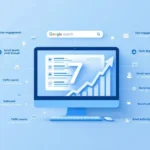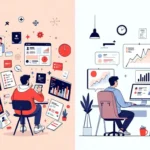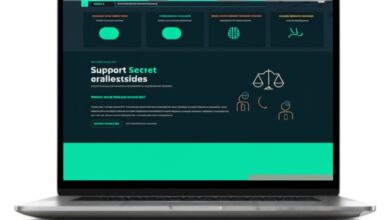
Have you ever stared at your sales dashboard, wondering how to fill it with qualified leads without breaking the bank?
I’ve been there too.
After years of trial and error, I’ve perfected a cold email system that generated 951 leads just this month for my agency and clients.
Key takeaways you’ll learn:
- How to set up your email infrastructure to maximize deliverability
- My proven 4-step copywriting framework that gets responses
- Intent-based targeting strategies that find prospects ready to buy
The Cold Email Challenge Most SaaS Companies Face
Most SaaS founders approach cold email all wrong. They blast generic templates to thousands of contacts, wondering why their messages land in spam or get ignored.
Cold email success isn’t about volume. It’s about precision.
According to a study by Snov.io, personalized cold emails generate 6x more responses than generic ones. Yet most companies still send the same templated message to everyone.
Let me walk you through my exact process that’s working right now in 2025.
Setting Up Your Email Infrastructure For Success
Getting Your Technical Foundation Right
Email deliverability makes or breaks your entire campaign. Without it, even the most compelling message never reaches your prospect.
Here’s my setup:
- 2 Google or Outlook inboxes per domain
- Proper SPF, DKIM, and DMARC records configured
- Domain warming period of 3 weeks minimum
Research from Return Path shows properly configured authentication can increase deliverability by up to 10%. These technical details matter tremendously.
Never skip domain warming. Send natural emails to friends and colleagues first, gradually increasing volume over 3 weeks.
Sending Best Practices
My volume limits keep me under the radar:
- Maximum 30 emails per day per inbox
- 10+ minute delays between sends
- Tools like Smartlead or Instantly for automation
The spacing between emails matters. Gmail and Outlook algorithms flag accounts that send in rapid succession, which looks automated and triggers spam filters.
Building High-Quality Lists That Convert
List quality directly impacts everything downstream. A perfectly crafted email to the wrong person will always fail.
My Go-To Data Sources
Here’s where I find my prospects:
- Apollo for initial list building
- Clay for advanced enrichment and personalization
- LinkedIn Sales Navigator for deeper targeting
- Crunchbase to identify recently funded companies
Each platform serves a specific purpose in my workflow. Apollo gives me broad reach, while Clay helps me layer on additional data points.
Intent-Based Targeting Strategies
Not all prospects are equal. These signals indicate buying readiness:
- Recent LinkedIn activity around your solution area
- New executive hires (especially in your buyer role)
- Recent funding announcements
- Companies actively hiring sales teams
A study by TOPO (now Gartner) found that targeting based on intent signals improves conversion rates by 3-5x compared to cold outreach without intent data.
My 4-Step Copywriting Framework That Gets Responses
The Structure That Works
My emails follow this proven pattern:
- Why I’m reaching out now (the trigger)
- How I help companies like theirs
- Quick social proof that builds credibility
- Clear, simple call to action
The key? Keep it under 75 words total. Nobody reads long cold emails.
Value Propositions That Resonate
Focus on just one of these core benefits:
- Save time
- Save money
- Make more money
- Reduce risk
Multiple value props confuse prospects. Pick the most relevant one based on their situation.
What To Eliminate From Your Emails
Cut these phrases immediately:
- “Hope this email finds you well”
- Corporate jargon like “ROI,” “streamline,” or “synergy”
- Desperate “breakup” emails
- Any sentence longer than 15 words
These phrases signal “sales email” and get you deleted instantly.
My Sequence Strategy That Maintains Engagement
The Perfect Email Flow
My sequences follow this structure:
- Email 1: Use a specific trigger (social post, job change)
- Email 2: Add context or case study as proof
- Email 3: Fresh angle with a new call to action
Never send more than 3-4 emails in a sequence. Additional emails dramatically decrease in effectiveness.
| Email # | Focus | Length | Follow-up Timing |
|---|---|---|---|
| 1 | Trigger event | 50-75 words | Initial outreach |
| 2 | Case study/proof | 50-75 words | 3-5 days later |
| 3 | New angle | 50-75 words | 3-5 days later |
Using AI Effectively
Many get this wrong:
- Use Clay to personalize at scale
- Don’t generate full emails with AI
- Feed company-specific data to GPT for better results
The magic happens when you blend human and AI elements. Fully AI-generated emails lack the personal touch needed for connection.
My Most Effective Approaches
Several strategies consistently deliver results:
The “Poke The Bear” Method
Ask about specific pain points you know they’re experiencing. This creates an emotional response that drives engagement.
The “Chunking” Approach
Break down your offer into smaller, more digestible pieces rather than presenting everything at once.
Lead Magnets That Work
Offering something valuable for free works exceptionally well:
- Free prospect lists in their niche
- Competitor teardowns
- Website audits via Loom video
According to HubSpot research, emails with valuable offers get 42% higher open rates and 28% higher click-through rates.
Real-World Performance Benchmarks
Understanding realistic metrics helps set proper expectations:
- Average conversion: 1 positive response per 350 contacts
- Maximum realistic response rate: 30% (in ideal conditions)
- Best performing emails: 1st and 2nd in sequence
Here’s an actual template that’s crushing it right now:
Subject: building pipeline at {{companyName}}?
Hey {{first_name}},
Saw you recently joined as {{job_title}}. congrats!
quick q do you have a plan in place to hit pipeline targets without a full SDR team?
we helped [ClientName] build $3.2M in pipeline with half the cost of an SDR.
want me to send over the breakdown?
Notice how conversational and simple this is. No fancy language, just straight to the point.
Subject Lines That Get Opens
Keep these ultra-simple:
- 2-3 words maximum
- No capitalization (looks like a colleague)
- Try formats like “question for {{first_name}}” or “{{first_name}}?”
Personalization At Scale
The highest-performing personalization angles:
- Referencing LinkedIn posts or podcast quotes
- Mentioning new job roles or company funding
- Noting hiring signals from their careers page
Each personalization point should feel specific to them, not something you could send to anyone.
Final Thoughts
Cold email remains one of the most cost-effective lead generation channels when done correctly.
The difference between spam and a welcome message comes down to personalization, timing, and value.
My approach focuses on quality over quantity. Sending fewer, more targeted emails always outperforms mass blasting generic messages.
Start with the technical foundation, build quality lists with intent signals, craft concise messages, and test continuously. The results speak for themselves – 951 leads this month and counting.
What cold email strategies are working for you? I’d love to hear about your experiences and answer any questions.






